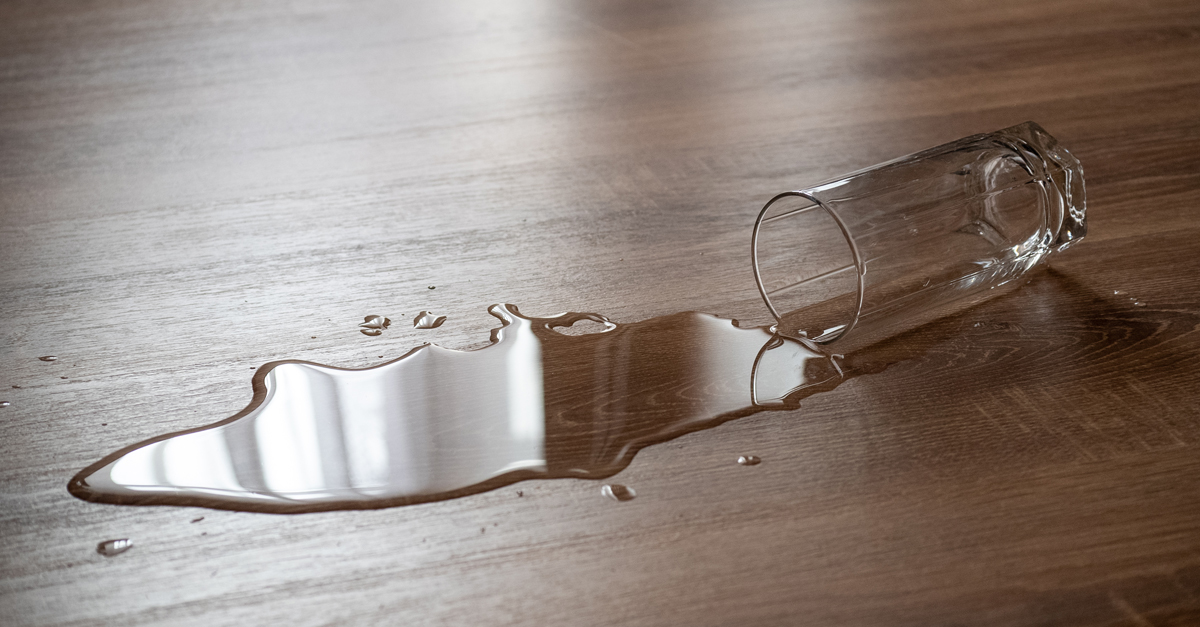The benefits of “waterproof” floors dominate advertising across the flooring landscape.
But what does waterproof mean to the facility manager who needs to maintain flooring? What does it mean in the language of the manufacturer?
The dictionary says waterproof means impervious to water. That sounds enticing when it comes to flooring. Many of us remember the original waterproof flooring of sheet vinyl (or linoleum if you’re that old). Top-down waterproof. Spill a glass, no problem! A rogue ice cube, no problem! A sloppy dog, no problem!
Then came laminate, a unique flooring that gave a wood visual without the wood price. Laminate has undergone numerous innovations; it’s now barely recognizable from the glued and strapped floors installed in the ’90s. The innovations in locking systems and edge treatments make these floors significantly better than they ever were. Many laminate floors are now marketed as “waterproof” and “water-resistant.”
Moisture issues
But are these floors suitable as a replacement for carpet in a facility with moisture issues?
What is under the carpet? Some facilities built pre-1975 may have vinyl asbestos tile (VAT) installed on the floor. Perhaps previous facility managers simply covered the VAT up, to avoid removing it. How does this affect what can go over the floor? Asbestos needs to be professionally remediated or not disturbed.
Both VAT and vinyl composite tile (VCT) are porous, meaning they breathe. Capping them off with a plastic, nonpermeable layer, such as a floating nonpermeable floor, can create issues if there is already moisture vapor transmission through the permeable floorings.
If the space feels damp, floods often, or seems musty, a hard surface floor—yes, even a “waterproof” one—may not be your best solution. All that mold and mildew need to grow is a moderate temperature, damp conditions, darkness, a lack of air movement, and a food source.
Note this manufacturer’s warning: “This flooring is waterproof and reliably secures the flooring panels on all four sides. However, excessive moisture in the subfloor could promote mold, mildew, and other moisture-related issues like the trapping of moisture emissions under the flooring, which may contribute to an unhealthy indoor environment.”
That information doesn’t help facility managers. What does the industry standard say should be done with those floors?
Categories of water
The ANSI/IICRC S500 Standard and Reference Guide for Professional Water Damage Restoration is the standard for handling flooring affected by water. First, you need to understand the categories of water losses.
Water categories refer to the level of contamination, based on both the source and the quality after contact with materials on-site. Time and temperature influence how contaminants grow or diminish, potentially changing the water’s category.
Water is classified into three categories:
- Category 1: This is clean water from sanitary sources (e.g., broken supply lines, rainwater) with minimal health risk. It can become more contaminated if it contacts unsanitary surfaces or remains wet over time, potentially deteriorating to Category 2 or 3.
- Category 2: This is water with significant contamination that may cause illness or discomfort (e.g., dishwasher discharge, toilet overflows without feces). It contains unsafe levels of microorganisms or nutrients and can deteriorate further under certain conditions.
- Category 3: This is grossly contaminated water that poses serious health risks (e.g., sewage, floodwater, river or seawater intrusion). It can contain pathogens, toxins, or hazardous materials and is highly dangerous upon contact or ingestion.
According to an IICRC publication, The Inspector’s Review, vinyl and luxury vinyl tile (LVT) floors are usually more resistant to water than wood-based floors. However, seams and joints can allow water to seep beneath the surface, especially if the flooring was a floating installation.
If Category 3 water gets underneath these types of floors, it can contaminate the substrate, adhesives, or underlayment. And if vinyl is glued down, that adhesive can trap moisture and bacteria.
Under these conditions, sometimes these floors can be cleaned, but rarely. If water has gotten under the surface or into the seams, removal is usually the safest option.
The real meaning of “waterproof”
Considering this information from IICRC, facility managers should not get hung up on the “waterproof” marketing. The waterproof labeling is a plus, but remember it’s only from topical moisture. Anything coming from the subfloor, an overflowing toilet, a plumbing leak, etc., is enough to make the restoration contractor put the floor in the dumpster. It has nothing to do with whether the floor can be dried out and sanitized; it’s more of a question of whether it should be restored or thrown out. And, health-wise, throwing it out is most likely the best option.


